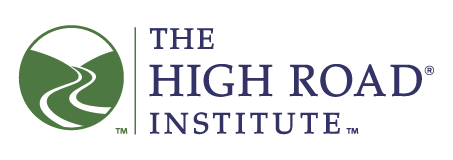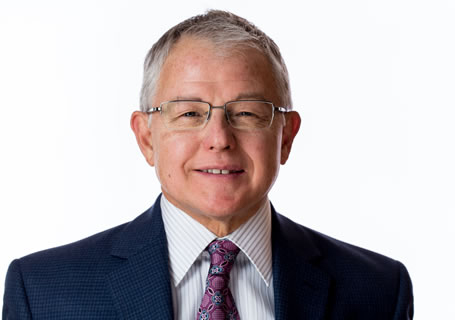10 ½ Step Strategy for Building a Culture of Ethics and Integrity
“The purpose of a control is to make the process go smoothly, properly and in accordance with high standards. Control is a principle of economy, not morality.”
Peter Drucker
Warning: This article may challenge your views on ethics!
In a recent survey, 84% of college students believe that the US is having a business crisis and 77% think CEO’s should be held personally responsible for it. When the same students were asked about their own ethics, 59% admit cheating on a test and only 19% said that they would report on a cheating student. Are these our future CEO’s?
The lesson in this study is: There is a real difference between the theory of ethics and its application. This will significantly impact your ability to improve the ethics in your firm’s culture.
Recently, AICPA President and CEO Barry Melancon challenged the CPA profession with “not just reform of the accounting laws, it is a rejuvenated accounting culture… This culture must build upon the profession’s traditional values… A commitment to rules – not just their letter but their spirit…”
But how do these professional values get into my behaviors? How do I know if an action I take is ethical if it disagrees with your values but is fine with mine?
In this article I will help you understand how corporate culture impacts ethical behaviors; explain how the path of least resistance adds to or harms ethical conduct, and show you can easily to create a culture that encourages ethical behaviors and integrity.
What is corporate culture how does it impact the ethical environment?
From the findings that have been uncovered from those rooting around in Enron’s self-destruction, one message rings out consistently. Enron’s corporate culture was built around two unstated yet rewarded “rules.” Rule #1: be creative and innovative and don’t sweat the repercussions of pushing the envelope. Rule #2: as long as we are showing growth in our stock price, don’t ask questions; just accept it and follow rule #1.
The lesson is: A healthy corporate culture requires both innovation and controls for balance. Yet it falls to the accounting people to make this balance work.
A culture is a group of people enacting a story and making that story a reality.
Corporate culture is the mood, attitude and atmosphere of an organization. In simpler words it is “how things are done around here.” In the matter of ethics and integrity your culture is acted out in: how often employees tell each other the truth, and how do the gray areas get handled. Since culture impacts and has an effect on nearly every result, this includes the level of ethical conduct. There are ten pieces of the culture mosaic (see side bar) and each piece is interconnected and impacts the others. This means that if you want to improve ethical conduct, you must work at it in all ten areas.
|
Key Truisms of Corporate Culture
- The culture or environment of an organization is a direct reflection of the attitudes and actions of its leaders.
- Whatever culture you have now, it is one the leaders have chosen, either consciously or unconsciously.
- Organizations have personalities and attitudes – just like people. Our company’s attitude shows up in how we choose to handle business.
- Employees’ attitudes are largely a product of the culture they work in.
- Cultures never get better on their own. Unmanaged cultures naturally go from good to bad.
- New employees want to fit in so they quickly learn how by modeling their peers and supervisor.
- Changing the culture means having people throughout the organization choose to change their behaviors.
- People are affected by the organization’s culture. The culture either builds them up or pushes them down.
Culture is important because your culture brings forth success including profitability and failure with equal efficiency. It is also important to you because if nothing changes in the web components of your culture, employees’ attitudes towards ethics will not change.
Every organization’s culture is built upon two integrated building blocks: the hard side (your processes, metrics delivery systems, tools, reports, and structure) and the soft side (people’s morale ideas, fears, attitudes, their involvement and rewards).
Which side do managers spend most of their time managing?
Which side are business leaders and the financial watchdogs most experienced in?
Which side are we accountants trained in?
Which side is easier to measure?
Executives and especially financial people spend their time on the hard side because it is where we are most comfortable. Yet, in nearly every case where there was a breach of ethics, it started because someone was not monitoring the soft cornerstone of the culture. So any plan to improve the level of integrity and ethics has to start here.
What business ethics really about
The average person cannot give you a definition of ethics and the typical response to what is integrity is: telling the truth. In societal culture being ethical is being in accord with approved standards of behavior or socially accepted code of conduct. Ethics is often used interchangeably with morality, which is conduct conforming to the law.
For the average employee (and no one claims to be average) he or she knows when something is ‘against the law.’ Speeding, accepting bribes, lying under oath, and taking someone else’s stuff are not socially accepted activities. Yet just because these are illegal does not stop people from doing them. More to the point, it is those little gray areas where I am not sure what is best course of action to take where we need ethical guidance. Those minute-by-minute actions and decisions are not covered in any official code of conduct.
So ethics is more than writing an ethics policy that you expect your employees to live by. To foster ethical behaviors, the underlying behaviors and decisions that impact everyday ethics must be monitored more often than once a year or even once a month. Employees need guidance on the small things that in the best interest of the firm and for society.
How To Design a Culture of Ethical Behaviors
The first thing to do is to understand the path of least resistance principle. This truism says that energy moves where it is easiest for it to go. It is also the reality that a person will (almost always) take the course that is the most convenient or least painful. Why do people naturally take the path of least resistance? To answer this you need to understand human behavior.
Key Truisms of Ethical Behaviors
- Unless the employee has been given guidance on how to handle gray areas, he will default to his personal ethical values.
- The more an employee handles a situation, the more she will cease to think about how or why to do it.
- Temptations to take the path of least resistance come in many forms, most of which you are not aware.
- In cultures where employees feel that they get the ‘short end of the stick,’ the employee will always find ways to gain a personal advantage.
- Strengthening integrity starts the “truth”! It means that I accept the truth about myself and that I tell the truth to others. Mutual honesty leads to widespread integrity.
- The attitude the employee has in the personal life will be the same one that shows up at work. People rarely behave one-way at home and another way at work.
- It is unreasonable to believe that everyone else has your ethical values.
- The level of ethics or integrity is an indicator. If ethics are lacking, it is a clear indicator that things within my organization have gone wrong or are not supporting such behaviors.
- What the organization rewards communicates to employees what is really important. Most organizations reward the “wrong” behaviors.
|
By changing the path of least resistance to the ethical one, you are ready for to implement the 10-½ steps needed to create a culture of ethics and integrity.
Specific steps to take:
- Appoint an ethics ombudsman.
- Create a living code of congruent ethics.
- Provide continuous ethics training and support.
- Screen your clients, vendors, and employees carefully.
- Evaluate ethical performance (similar to on-the-job evaluations) regularly.
- Be open to 100% honest feedback, no matter the source.
- Use corporate storytelling to foster ethical values and provide guidance.
- Avoid all situations “squeeze play” where employees lose no matter what they do or face extreme and unreasonable pressures of a result.
- Use specific tools that enforce ethical behaviors.
- Stay aware of situations that could force ethical dilemmas before they happen.
10½. Monitor your culture to look for areas that may support or hide unethical behaviors.
The core of this action plan is to have someone in your firm charge with the duty, willingly of course, to be the ‘go to person’ whenever an employee is not sure if an action or decision is ethical.
“First there is the law. It must be obeyed. But the law is the minimum. You must act ethically.”
IBM employee manual
Ron Rael Leadership Provocateur, is a keynote speaker, consultant, and author.
Follow Ron on Twitter: @leaderexpert
Schedule a Call with Leadership Expert, Ron Rael


